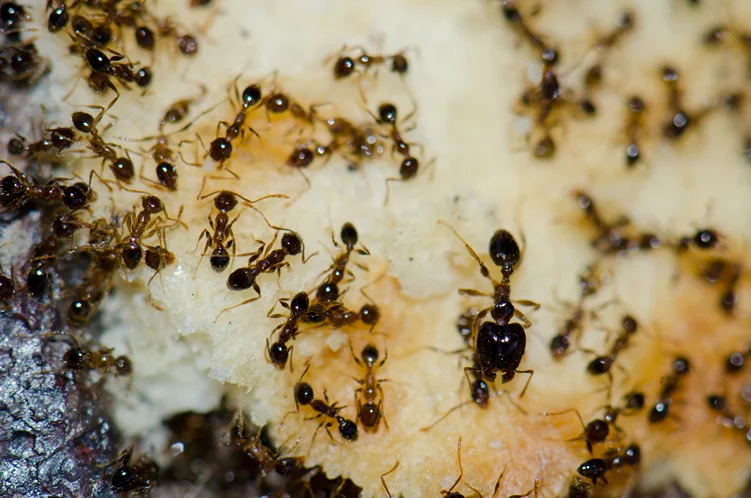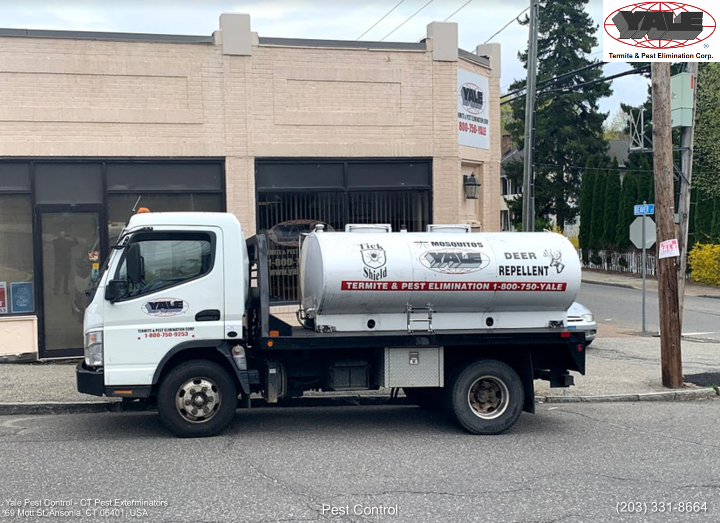
Although most ants may look the same from afar, each type of ant has characteristics that set them apart from one another. All throughout the United States are varieties of these ants, some of which have painful stings. There are 2 types of ants that would commonly construct an ant colony near your home: the Argentine and pavement ants.
So what's the difference between Argentine and pavement ants? The most evident difference would be their appearance, but they also differ in their history, chosen habitats, and most especially, their diets. Physically, Argentine ants are more reddish-brown or brown in color, while pavement ants are more black in color.
Argentine ants are highly adaptable and can nest in a wide range of environments. They are frequently found in soil, beneath timber, logs, trash, or mulch. They may also build their nests in shrub and tree cavities. Colonies may be huge, with hundreds of queens living in them. Argentine ants don't typically swarm to establish new nests. Instead, new nests are built around the original, keeping the queen's old colony linked.
The network of interconnected colonies might grow into a large infestation over time. Argentine ant colonies can include millions of insects and many queens. These colonies are capable of occupying whole city blocks. Between their web of nests and food sources, these ants walk in trails. Sweets, honeydew, and fatty household meals are favorites of Argentine ants.
Pavement ants are found throughout the United States but mostly in the Midwest. They earned their name because they nest in cracks in the pavement and under sidewalks, piling the resulting dirt in a mound on top of the pavement. Pavement ants invade buildings while foraging for food. A pavement ant feeds on a wide variety of foods, including meats, grease, live and dead insects, seeds, and honeydew from aphids.
Pavement ants prefer to eat greasy foods and can eat many foods consumed by humans. They forage for food for their colonies and set up trails to food sources from their nests. Nests are outdoors under stones, along curbs, or in cracks of pavement. They can nest indoors on walls and under floors. Pavement ant workers enter houses to forage and can become a nuisance when large groups infest a kitchen or garden patio. They can sting and bite.
Due to their vast size, Argentine ant colonies are difficult to notice. Despite their large Argentine ant colony, these ants are just 1/16 inches in length, wingless, and vary in color from light brown to dark brown. Males are somewhat bigger and darker than queens. The following traits separate the Argentine ant from other ant species:
The pavement ant measures about 1/8 inches in length. They are dark to black in hue, with whiter legs and antennae. Despite its differences, the pavement ant has the following defining characteristics:
Argentina's ants have colonized 15 nations on 6 continents. These obnoxious invaders have even set up shop on islands, such as Hawaii. Unfortunately for those who can’t stand ants. Argentine ants have thrived in developed areas throughout the southern United States, particularly in California. They build their nests in both wet and dry environments, and live in soil, beneath wood, garbage, or mulch, and in shrub and tree cavities.
Meanwhile, pavement ants may be found all around the country. They are significant pests along the Atlantic coast, in the Midwest, and on the West Coast. These ants can also be found in the mid-Atlantic states in the South.
Pavement ants build their nests in the open, beneath stones, along curbs, and in cracks in the pavement. They also build nests in walls and under floors inside.
Hundreds of queens are common in an Argentine ant nest. Swarming isn't used by this ant species to create new nests. Instead, new nests are built around the old, and the queen's previous colony is maintained. These interconnected roadway networks have the potential to swiftly grow into large colonies.
Argentine ants can have millions of members, and many queens, and can take up whole city blocks in their colonies in vast paths with "lanes" 3 to 5 ants wide. Argentine ants migrate between their highway of nests and food sources.
Meanwhile, pavement ants during the summer are a common sight – these ants can be seen following sidewalks, roads, patios, and foundation wall cracks. They can also be occasionally spotted transporting dirt, excavated detritus, food, and eggs from one colony to another.
Argentine ant workers favor sweet meals like syrup, fruit juices, and plant secretions. Aphids are kept in the colony because they enjoy the sweet secretions of the small bugs. The ants love it so much that they bite the aphids' wings off to keep them from fleeing.
Pavement ants enter buildings in search of food. Pavement ants consume honeydew from aphids, nectar, fruits, seeds, and insects, among other things. Meats, oil, bread, cheese, and ice cream are among the items they will consume.
There are various things you can do to assist prevent the Argentine and pavement ant from overrunning your house:

Yale Pest Control handles every kind of infestation there is, from ants to bedbugs to rats. We are the best local and family-owned pest control company around. Since 1983, our firm has been committed to providing fast solutions and reliable services to Connecticut homeowners and businesses.
Our team has mastered how pests infest homes and other spaces, knowing where they like to dwell, feed, and reproduce. We'll propose only the best solutions to safeguard your space with our pest extermination skills and thorough assessments of the target area. We make sure that infestations are kept at bay so you can regain your peace of mind.
Call us now at 800-750-9253.